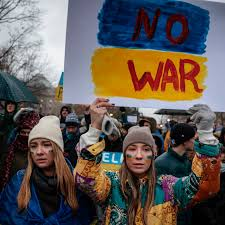My word of the day is "Hypocrisy" Anti war sentiment is currently being splashed all over the mainstream media here in the UK, Daily the news bombards us with images of innocent people who have been bombed, shot at displaced and lost loved ones, We are officially urged to sympathise with these people, John Lennon's song "Give peace a chance" was played at the international rugby match at Twickenham at the weekend.
Monday, 14 March 2022
Anti-War Hypocrisy
My word of the day is "Hypocrisy" Anti war sentiment is currently being splashed all over the mainstream media here in the UK, Daily the news bombards us with images of innocent people who have been bombed, shot at displaced and lost loved ones, We are officially urged to sympathise with these people, John Lennon's song "Give peace a chance" was played at the international rugby match at Twickenham at the weekend.
Saturday, 12 March 2022
Jack Kerouac's Centennial
As chaos reigns throughout the world I am reminded that if literary hero,: the beat writer Jack Kerouac famous for the way he smashed literary conventions was.alive today, he would be celebrating his 100th birthday. This past Thursday, San Francisco’s City Lights, also a publisher of eight Kerouac books, celebrated this occasion with a packed online event. Other events in significant places in Kerouac’s life, like Lowell, Massachusetts—where he was born—are also planned in the coming days.
Kerouac learned to speak French at home before he learned English at school. Reportedly he did not learn English until he was six years old . His father Leo Kerouac owned his own print shop, Spotlight Print, in downtown Lowell, and his mother Gabrielle Kerouac, known to her children as Memere, was a homemaker. Kerouac later described the family’s home life: “My father comes home from his printing shop and undoes his tie and removes his1920s vest, and sits himself down at hamburger and boiled potatoes and bread and butter, and with the kiddies and the good wife.”
Jack Kerouac endured a childhood tragedy in the summer of 1926, when his beloved older brother Gerard died of rheumatic fever at the age of 9. Drowning in grief, the Kerouac family embraced their Catholic faith more deeply. Kerouac’s writing is full of vivid memories of attending church as a child: “From the open door of the church warm and golden light swarmed out on the snow. The sound of the organ and singing could be heard.”
Jack would earn a football scholarship to Columbia University, and planned to work in insurance after finishing school, according to the Beat Museum,http://www.kerouac.com/ which goes into detail about Kerouac’s rise to literary and cultural stardom.
Jack Kerouac in his eighteen books and many others under Jack's influence were to me important epiphanies on my own path of self discovery. He taught me about "Spontaneous prose." - writing without revising....... He called this " a spontaneous bop prosody." which is a bit like a jazz musician taking an improvised solo, and he took it as far as he could go, with no editing and no pause of breath. Sometimes what is left, has no meaning, a void, but often their is a glimmer, that spells hope, that can become endless, can run off the page, infinite but still accessible.
On my bookshelf at home Kerouacs influence groans on my bookcases, his own works, sharing spaces with others , that were touched by his inspiration. There is something about his tragic, magic life that still resonates, hums, there will always be new connections, outhouses where seeds will forever drift. New poets will emerge, to experience, among the whole wide world, words will dance, impulsively between time, forever and forever. Enthusiasm will be shared, thoughts will be exchanged, and for some the personal will always be political.Passion will ignite.
Jack had a wild spirit, but such a dazzling voice, who through his writing revealed him as a believer in humanity, a dreamer, a doer and an explorer of metaphysical depth. He was however also a recluse, socially awkward, and despite maintaining a prolific pace of publishing and writing, Kerouac was never able to cope with the fame he achieved after On the Road, and his life soon devolved into a blur of drunkenness and drug addiction that would ultimately destroy him .
In the late fifties or early sixties, Kerouac switched from wine to whiskey, and was also drinking rum at this point, but whiskey was to remain his drink of choice (and that of his mother) for the rest of his life. In Tristessa he had said that he was drinking “Juarez Bourbon whiskey” and that he mixed it with Canadian Dry, while most biographers and friends have recounted his fondness for Johnny Walker Red. During a trip to France, Kerouac began drinking Cognac, and once told Philip Whalen that “Cognac [is] the only drink in the world, with soda and ice, that won’t actually kill you.”
While a preeminent chronicler of America, Kerouac also spent a significant amount of time in Mexico, where he developed a taste for tequila and his signature drink, the margarita.Kerouac’s margarita is far from the saccharine slushie many would associate it with today. The drink is essentially a derivative of the Sidecar, substitute the cognac for tequila, the lemon juice for lime, keep the triple sec and you have it. Shake well, straining into a cocktail glass.After a few of these you’ll feel as free as Kerouac's prose.
In Big Sur Kerouac concludes the novel with a detailed account of his nervous breakdown. “Masks explode before my eyes when I close them, when I look at the moon it waves, moves, when I look at my hands and feet they creep-Everything is moving, the porch is moving like ooze and mud, the chair trembles under me” (Kerouac Big Sur Pg 200).
In the following paranoiac passage, Kerouac explains a premonition of his death.: "But angels are laughing and having a big barn dance in the rocks of the sea…Suddenly as clear as anything I ever saw in my life, I see the Cross…it stays a long time, my heart goes out to it, my whole body fades away to it.(Kerouac Big Sur Pgs.204-205)
With Kerouac’s mother sick, the author attempted to continue his writing. Between March and May of 1967, Kerouac wrote a reworking of the period of his life he covered in The Town and the City called the Vanity of Duloz . In February of 1968, Kerouac was told by his friend Luanne Henderson that Neal Cassady had died in Mexico City. Henderson spoke of Kerouac’s reaction after hearing of Cassady’s death “Afterward, Jack liked to pretend he didn’t really think Neal was dead, even telling interviewers from The Paris Review that Neal would show up again someday and surprise everyone.”
After resettling in Florida by 1968, Kerouac settled with his wife and together they tried to take care of the author’s ailing mother. Jack wrote very little during his final year and would rarely leave the house. Stuck in a sad exile,this mystical breath had grown tired, what was once beautiful had begun to drift towards bitterness.
-lights out-
fall, hands a-clasped, into instantaneous
ecstasy like a shot of heroin or morphine,
the gland inside of my brain discharging
the good glad fluid (Holy Fluid) as
i hap-down and hold all my body parts
down to a deadstop trance-Healing
all my sicknesses-erasing all-not
even the shred of a ‘I-hope-you’ or a
Loony Balloon left in it, but the mind
blank, serene, thoughtless. When a thought
comes a-springing from afar with its held-
forth figure of image, you spoof it out,
you spuff it off, you fake it, and
it fades, and thought never comes-and
with joy you realize for the first time
‘thinking’s just like not thinking-
So I don’t have to think
any
more’
Woman - Jack Kerouac
A woman is beautiful
but
you have to swing
and swing and swing
and swing like
a hankerchief in the
wind
149th Chorus - Jack Kerouac
I keep falling in love
with my mother
I dont want to hurt her
=Of all people to hurt
Every time I see her
she's grown older
But her uniform always
amazes me
For its Dutch simplicity
And the Doll she is.
The doll-like way
she stands
Bowlegged in my dreams,
Waiting to serve me
And I am only an Apache
Smoking Hashi
In old Cabashy
By the Lamp
2111th Chorus - Jack Kerouac
The wheel of the quivering meat
conception
Turns in the Void expelling human beings,
Pigs, turtles, frogs, insects, nits,
Mice, Lice, Lizards, rats, roan
Racing horses, poxy bucolic pig tics,
Horrible unnameable lice of vultures
Murderous attacking dog-armies
Of Africa, Rhinos roaming in the jungle
Vast boars and huge gigantic bull
Elephants, rams, eagles, condors,
Pones and Porcupines and Pills-
All the endless conception of living
beings
Gnashing everywhere in Consciousness
Throughout the ten directions of space
Occupying all the quarters in and out,
From supermicroscopic no-bug
To huge Galaxy Lightyear Bowell
Illuminating the sky of one mind
And then they got him - Jack Kerouac
The Oil of the Olive
Bittersweet taffies
Bittersweet cabbage
Cabbage soup made right
A hunk a grass
In a big barrel
Stunk but Good
163rd Chorus - Jack Kerouac
Left the Tombs to go
and look at the
Millions of cut glass-
-a guy clocking them,
as you look you swallow,
you get so fat
you can't leave the building
-stand straight,
don't tip over, breathe
in such a way yr fatness
deflates, go back to
the Tombs,
ride the elevator-
he tips over again'
gazes on the Lights,
eats them, is clocked,
gets so fat
he can leave elevator,
has to stand straight
and breathe out the fat -
-hurry back to the Tombs
242nd Chorus - Jack Kerouac
The sound in your mind
is the first sound
that you could sing
If you were singing
at a cash register
with nothing on yr mind-
But when that grim reper
comes to lay you
look out my lady
He will steal all you got
while you dingle with the dangle
and having robbed you
Vanish
Which will be your best reward,
T'were better to get rid o
John O'Twill, then sit a mortying
In this Half Eternity with nobody
To save the old man being hanged
In my closet for nothing
And everybody watches
When the act is done-
Stop the murder and the suicide!
All's well!
I am the Guard
Jack Kerouac: I'm Sick of Myself...I'm Not a Courageous Man
A rare interview of Jack Kerouac in French (with english subtitles) for a Canadian television channel in which he explains how he came up with the name that described the literary movement of his generation... the Beat Generation. Kerouac also talks about the differences with the beat generation and the Bohemians and when asked about himself, he admits being sick of himself, although he does think of himself as a great writer...
Jack Kerouac on the Steve Allen show 1959
Jack Kerouac Reads On the Road
This 28-minute recitation was apparently recorded on an acetate disc in the 1950s but thought lost for decades. It re-surfaced during the late 1990s. Enjoy.
You may also like this playlist "Music in On The Road." https://youtube.com/playlist?list=PLJ...
Thursday, 10 March 2022
Tibetan Uprising Day 2022
Tuesday, 8 March 2022
International Women's Day 2022: Break the Bias
International Women's Day (IWD), celebrated on March 8, is a global day celebrating the social, economic, cultural, and political achievements of women. The women's day has been celebrated for well over a century, with the first one in 1911.
The movement grew to as many as 150,000 striking workers within a few days. Eventually, even the Russian army joined the marchers, withdrawing their support from the Tsar Nicholas. It was the beginning of the Russian Revolution.
After World War II, the holiday picked up steam, and lost many of its associations with socialism and radical politics. As the women’s liberation movement swept around the world in the 1970s, the United Nations designated 1975 International Women's Year and celebrated the holiday for the first time. Two years later in 1977, designated March 8 International Women’s Day, and, in 1996, began to adopt an annual theme for every year. The first theme was "Celebrating the past, Planning for the Future."The International Women’s Day website https://www.internationalwomensday.com/ has announced that this year’s theme is #BreakTheBias.The organisation is calling on people to “imagine a gender equal world” which is free of biases, stereotypes and discrimination against women. Whether deliberate or unconscious, bias makes it difficult for women to move ahead. Knowing that bias exists isn't enough. Action is needed to level the playing field. Research shows that gender equality will bring benefits for the whole of society, from healthier and safer communities to economic success and stronger democracies.
Yet contrary to Orientalist misrepresentation, women have been at the heart of liberation struggles in the Middle East and North Africa. At the moment in the region of Turkey and Kurdistan women are being politicised in a long struggle against theocratic totalitarianism, inspiring us in their fight for emancipation and freedom.
So today as I observe International Womens Day, I stand up for all women still trapped by injustices, still suffering from abuse, at the end of the day I believe the women's struggle is a struggle for the freedom of all people, recuperating the fair value of people over things. I recognise the practice and theory of mutual support that women have laid, that are the foundations of social change that we must keep building. Women who recognised the tactical necessity of standing and working together, lest they be destroyed individually, women who put to shame the ridiculous notion of a 'women's place'. Their struggle is ours too. I acknowledge all those who have been persecuted, jailed, tortured, simply for being a woman. Especially those who are among the most vulnerable in this present moment of time - the refugees.
Let us also celebrate the powerful women who've fought dictatorship, risked their lives to fight climate change and led mass movements for justice across the world, we cannot let their contributions go unnoticed today and every day. As Audre Lorde said "I am not free while any woman is unfree, even when her hackles are very different fro my own,"
Sunday, 6 March 2022
Saturated in Darkness
Saturday, 5 March 2022
Remembering the Towering Figure of Rosa Luxemburg
She followed no leader, was no ones puppet and when she criticised Lenin, it was in relation to dictatorial aspects. She said
"As Marxists we have never been idol worshippers of formal democracy." She went on
Possibly her believe in democracy is what failed her philosophically, nevertheless the questions she posed still worth looking at today. She also wrote
She warned against nationalism as a mortal enemy of workers and the socialist movement and as a breeding ground for militarism and war.
“The immediate task of socialism”,
she wrote in 1916, “
shall be the intellectual liberation of the proletariat from the domination of the bourgeoisie as manifest in the influence of nationalistic ideology.”
'"The leadership has failed. Even so, the leadership can and must be recreated from the masses and out of the masses. The masses are the decisive element, they are the rock on which the final victory of the revolution will be built... Order reigns in Berlin! You stupid henchmen! Your 'order' is built on sand. Tomorrow the revolution will already 'raise itself with a rattle' and announce with fanfare, to your terror: I was, I am , I shall be!"
About the drowned girl - Bertolt Brecht
As she drowned, she swam downwards and was borne,
From the smaller streams to the larger rivers,
In wonder the opal of the heavens shone,
As if wishing to placate the body that was hers.
Catching hold of her were the seaweed , the algae,
Slowly she became heavy as downwards she went,
Cool fish swam around her legs, freely,
Animals and plants weight to her body lent.
Dark light smoke in the evenings the heavens grew,
But early in the morning the stars dangled, there was light,
So that for her, there remained too,
Morning and evening, day and night.
Her cold body rotted in the waters there,
Slowly, step by step, god too forgot,
First her face, then her hands, and finally her hair
She became carrion of which the rivers have a lot.
When the Music Stops: Yemen, Art and War







